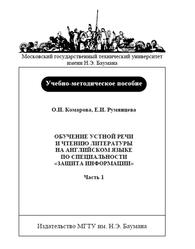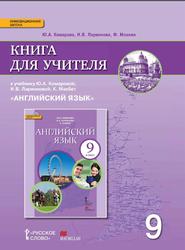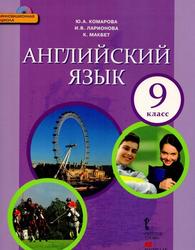Пособие состоит из двух тематических разделов: первый включает тексты о технологии CMOS, второй — о нанотехнологиях. Отдельно предлагаются тексты для ознакомительного чтения и краткого изложения содержания прочитанного. Тексты представляют собой статьи (или извлечения из статей) англоязычных авторов. Пособие содержит также упражнения на понимание текста, отработку и закрепление лексико-грамматических конструкций, развитие навыков устной речи.
Для студентов 4-го курса, обучающихся по специальности «Конструирование и технология электронно-вычислительной аппаратуры».
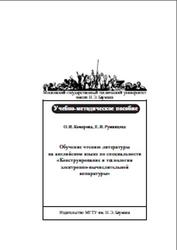
What is Nanotechnology?
There’s a lot of buzz—nanotechnology is “coming soon.” But what is nanotechnology? Why doesn’t anyone ever explain that? Well, it’s not that easy. While experts agree about the size of nanotechnology— that it’s smaller than a nanometer (that’s one billionth of a meter) they disagree about what should be called nanotechnology and what should not. Looking back at the historical roots of nanotechnology helps us get a better grasp on what nanotechnology is and why it’s important now, and how it will change the world in the future.
The story of nanotechnology begins in the 1950s and 1960s, when most engineers were thinking big, not small. This was the era of big cars, big atomic bombs, big jets, and big plans for sending people into outer space. The world’s largest oil tankers, cruise ships, bridges, interstate highways, and electric power plants are all products of this era. Other researchers, however, focused on making things small. The invention of the transistor in 1947 and the first integrated circuit (IC) in 1959 launched an era of electronics miniaturization. Somewhat ironically, it was these small devices that made large devices, like spaceships, possible. For the next few decades, as computing application and demand grew, transistors and ICs shrank, so that by the 1980s engineers already predicted a limit to this miniaturization and began looking for an entirely new approach.
Оглавление
Предисловие
Unit 1. CMOS Technology
Text 1. The Importance of Moor’s Law
Text 2. Lithography
Text 3. Transistor Scaling and Design
Unit 2. Nanotechnology
Text 4. What is Nanotechnology?
Text 5. Heterogeneous Three-Dimensional Electronics
Text 6. Nanophotonic Structures Suitable for CMOS Compatible Technologies
Unit 3. Texts for Rendering
Text 1. Critical Part of a CMOS System
Text 2. Memory Cells Scaling
Text 3. Wiring and Interconnections
Text 4. Silicon Photonics
Text 5. The Advantages Outweigh the Risks
Text 6. Brain for Nanorobots
Text 7. Use of Nanowires
Text 8. Nanowires within Nanowires
Литература.
Бесплатно скачать электронную книгу в удобном формате, смотреть и читать:
Скачать книгу Обучение чтению литературы на английском языке по специальности конструирование и технология электронно-вычислительной аппаратуры, Комарова О.И., Румянцева Е.И., 2010 - fileskachat.com, быстрое и бесплатное скачивание.
Скачать pdf
Ниже можно купить эту книгу, если она есть в продаже, и похожие книги по лучшей цене со скидкой с доставкой по всей России.Купить книги
Скачать - pdf - Яндекс.Диск.
Дата публикации:
Теги: учебник по английскому языку :: английский язык :: Комарова :: Румянцева
Смотрите также учебники, книги и учебные материалы:
Следующие учебники и книги:
 Обучение чтению литературы на английском языке по специальности прикладная механика, Магидова И.И., 2011 — Методические указания содержат оригинальные тексты? задания, направленные на закрепление лексико-грамматического материала, словарные блоки, включающие лексику, необходимую для понимания и перевода … Книги по английскому языку
Обучение чтению литературы на английском языке по специальности прикладная механика, Магидова И.И., 2011 — Методические указания содержат оригинальные тексты? задания, направленные на закрепление лексико-грамматического материала, словарные блоки, включающие лексику, необходимую для понимания и перевода … Книги по английскому языку Курс эффективной грамматики английского языка, Афанасьев А.В., 2015 — Задача данного учебного пособия сделать усвоение и понимание языка пошаговым и максимально понятным, а значит, и эффективным. Для этого понадобятся … Книги по английскому языку
Курс эффективной грамматики английского языка, Афанасьев А.В., 2015 — Задача данного учебного пособия сделать усвоение и понимание языка пошаговым и максимально понятным, а значит, и эффективным. Для этого понадобятся … Книги по английскому языку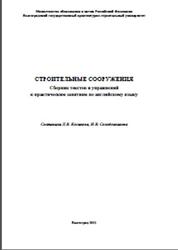 Строительные сооружения, Сборник текстов и упражнений к практическим занятиям по английскому языку, Косинова Л.В., Солодовникова И.В., 2011 — Содержит неадаптированные, оригинальные тексты, освещающие новейшие методы сооружения строительных объектов, предназначенные для развития навыков чтения и перевода научно-технической литературы по … Книги по английскому языку
Строительные сооружения, Сборник текстов и упражнений к практическим занятиям по английскому языку, Косинова Л.В., Солодовникова И.В., 2011 — Содержит неадаптированные, оригинальные тексты, освещающие новейшие методы сооружения строительных объектов, предназначенные для развития навыков чтения и перевода научно-технической литературы по … Книги по английскому языку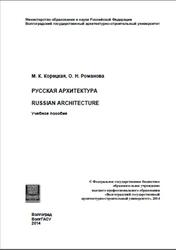 Русская архитектура, Russian Architecture, Корецкая М.К., Романова О.Н., 2014 — Представлены оригинальные тексты на английском языке с поурочным англо-русским словарем, системой упражнений для развития навыков устной речи, грамматики и профессионального … Книги по английскому языку
Русская архитектура, Russian Architecture, Корецкая М.К., Романова О.Н., 2014 — Представлены оригинальные тексты на английском языке с поурочным англо-русским словарем, системой упражнений для развития навыков устной речи, грамматики и профессионального … Книги по английскому языку
Предыдущие статьи:
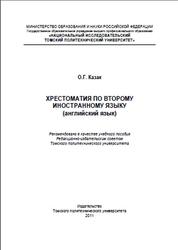 Хрестоматия по второму иностранному языку, английский язык, Казак О.Г., 2011 — Пособие содержит тексты и ситуации для монологичных высказываний, предназначенные для использования в процессе обучения английскому языку как второму. Рекомендации и … Книги по английскому языку
Хрестоматия по второму иностранному языку, английский язык, Казак О.Г., 2011 — Пособие содержит тексты и ситуации для монологичных высказываний, предназначенные для использования в процессе обучения английскому языку как второму. Рекомендации и … Книги по английскому языку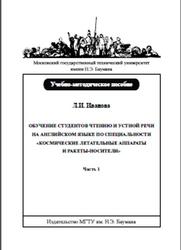 Обучение студентов чтению и устной речи на английском языке по специальности космические летательные аппараты и ракеты-носители, Иванова Л.И., 2010 — Пособие содержит учебные материалы: тексты на английском языке, словарные терминологические блоки, предтекстовые и послетекстовые лексико-грамматические упражнения, способствующие пониманию и осмыслению … Книги по английскому языку
Обучение студентов чтению и устной речи на английском языке по специальности космические летательные аппараты и ракеты-носители, Иванова Л.И., 2010 — Пособие содержит учебные материалы: тексты на английском языке, словарные терминологические блоки, предтекстовые и послетекстовые лексико-грамматические упражнения, способствующие пониманию и осмыслению … Книги по английскому языку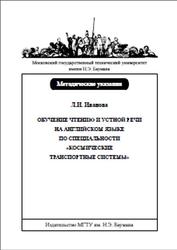 Обучение чтению и устной речи на английском языке по специальности космические транспортные системы, Иванова Л.И., 2012 — В методических указаниях содержатся учебные материалы: тексты на английском языке, словарные терминологические блоки, предтекстовые и послетекстовые лексико-грамматические упражнения, способствующие пониманию … Книги по английскому языку
Обучение чтению и устной речи на английском языке по специальности космические транспортные системы, Иванова Л.И., 2012 — В методических указаниях содержатся учебные материалы: тексты на английском языке, словарные терминологические блоки, предтекстовые и послетекстовые лексико-грамматические упражнения, способствующие пониманию … Книги по английскому языку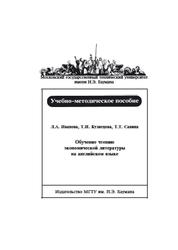 Обучение чтению экономической литературы на английском языке, часть 3, Иванова Л.А., Кузнецова Т.И., Савина Т.Т., 2009 — Пособие состоит из трех разделов - уроков. Каждый урок содержит основной текст, дополнительные тексты для поискового чтения, упражнения на активизацию … Книги по английскому языку
Обучение чтению экономической литературы на английском языке, часть 3, Иванова Л.А., Кузнецова Т.И., Савина Т.Т., 2009 — Пособие состоит из трех разделов - уроков. Каждый урок содержит основной текст, дополнительные тексты для поискового чтения, упражнения на активизацию … Книги по английскому языку

